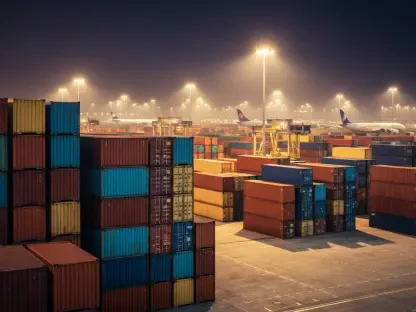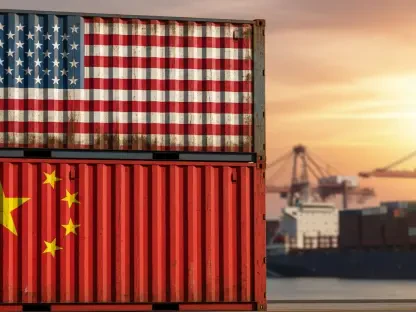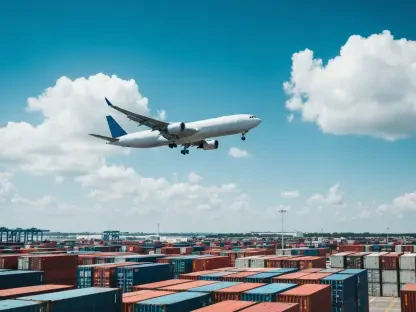In the first nine months of 2024, international airfreight forwarders in the Philippines experienced notable growth, processing 2.5% more air cargo than the previous year, according to data from the Civil Aeronautics Board (CAB). Evaluating performance based on the types of cargo handled—consolidations, breakbulking, and direct shipments—the data reveals significant trends and shifts in the industry. The total cargo processed reached 233.807 million kilograms, up from 228.042 million kilograms a year earlier. This article delves into the performance of the top forwarders, the types of cargo handled, and the state of the market, providing a comprehensive overview of the gains and shifts among industry players.
Overview of Air Cargo Types
Consolidations Lead the Market
During the analyzed period, air cargo handled by forwarders in the Philippines primarily fell into three categories: consolidations, breakbulking, and direct shipments. Consolidations made up the largest portion, constituting 43% of the total cargo handled. Specifically, consolidations increased by 1.8%, rising from 98.755 million kilograms the previous year to 100.553 million kilograms. This growth highlights the continued preference for combining smaller shipments into larger, more cost-effective loads, benefiting both shippers and forwarders through economies of scale.
This 1.8% increase in consolidations can be attributed to several factors, including the rise in e-commerce and the demand for cost-efficient shipping solutions. Companies that need to transport goods consistently are increasingly opting for consolidation to reduce shipping costs, leading to steady growth in this segment. Further, the improvement in logistics technology and processes has made consolidation more manageable and effective, enabling better tracking and management of shipments.
Breakbulking Sees Significant Growth
Breakbulking, which comprises 39.27% of the total cargo handled, saw robust growth of 4.2%, hitting 91.806 million kilograms, up from 88.081 million kilograms the previous year. Breakbulking refers to the transport of cargo that must be individually handled rather than being containerized, and this category experienced the most substantial growth among all cargo types. This significant rise indicates a possible increase in the volume of non-containerized goods being transported internationally.
The rise in breakbulking can be associated with the increasing import and export activities requiring special handling and facilities. Industries such as construction and manufacturing that deal with bulky, heavy items like machinery, steel, and raw materials contribute significantly to this category. Improvements in handling and processing at cargo terminals have likely facilitated this growth, as have better regulations and compliance among service providers.
Modest Growth in Direct Shipments
Direct shipments, though they saw modest growth compared to other categories, still recorded an increase of 0.7%. The volume increased to 41.449 million kilograms from the previous year’s 41.206 million kilograms. Direct shipments involve the transportation of goods from a single origin to a single destination without consolidation. This category’s slight gain reflects a stable demand for direct, uncomplicated shipping solutions.
Factors contributing to this increase include businesses that need to ship products directly to meet customer deadlines. The slight bump in direct shipments may also signify growing consumer demand for quick and reliable delivery services, particularly in sectors where time-sensitivity is critical. Despite being the smallest category, direct shipments maintain their relevance in the market by catering to specific needs distinct from those served by consolidation and breakbulking.
Performance of Leading Airfreight Forwarders
Nippon Express Philippines Corp. Dominates the Market
Among the forwarders, several key players led the market, with Nippon Express Philippines Corp. at the forefront, processing 36.281 million kilograms of cargo and capturing a substantial 15.52% market share. Nippon Express’s leadership indicates its strategic positioning and operational efficiency in catering to various cargo types, particularly in consolidation and breakbulking.
The company’s robust performance can be attributed to its extensive network, strong customer relationships, and advanced logistics solutions. By continuously leveraging technology and innovation, Nippon Express has maintained its competitive edge, allowing it to handle large volumes efficiently and meet clients’ diverse needs. Such factors have contributed to its dominance and the ability to capture significant market share.
Federal Express Pacific and Schenker Philippines, Inc. Follow
Following Nippon Express, Federal Express Pacific secured the second position with a 7.08% market share, handling 16.554 million kilograms of cargo. Schenker Philippines, Inc. clinched the third spot by transporting 11.882 million kilograms, accounting for 5.08% of the total. These forwarders have exhibited strong performance thanks to strategic investments in infrastructure and service offerings tailored to meet growing logistics demands.
Federal Express Pacific’s consistent performance is bolstered by its comprehensive service network and commitment to providing time-definite delivery services. Similarly, Schenker Philippines’ rise to the third position showcases its effective integration of global logistics strategies and local market insights, contributing to its steady growth. Both companies’ success underscores their ability to adapt to market fluctuations while ensuring reliable service delivery.
Notable Climbs in the Rankings and Improved Reporting Compliance
Other prominent companies include Kintetsu World Express (Phils.), Inc. at fourth with 11.614 million kilograms, followed by U-Freight Phils., Inc., and Yusen Logistics Philippines, Inc., handling 11.036 million kilograms and 10.090 million kilograms respectively. The shifts in rankings highlight the dynamic nature of the market, with businesses continually vying for more significant market shares through improved services and strategic positioning.
A noteworthy aspect of the report is the improvement in compliance with reporting requirements, with 93.53% of accredited forwarders submitting complete reports. This figure represents an increase from the previous year’s 93.09%, indicating better adherence to regulatory standards and transparency in operations. Improved compliance practices pave the way for more accurate data collection and analysis, fostering a transparent and trustworthy industry landscape.
The competitive dynamics among leading forwarders and the gains observed in cargo volumes underline the thriving state of airfreight in the Philippines. The detailed list of top players provides insights into the market’s robustness, marked by strategic growth and operational advancements tailored to meet the evolving demands of international shipping.
Conclusion and Future Outlook
In the first nine months of 2024, international airfreight forwarders in the Philippines experienced notable growth, handling 2.5% more air cargo than the same period the previous year, according to data from the Civil Aeronautics Board (CAB). The evaluation considers different types of cargo—consolidations, breakbulking, and direct shipments—showing significant trends and shifts in the industry. Total cargo processed in this period reached 233.807 million kilograms, compared to 228.042 million kilograms a year prior. This article examines the performance of the leading forwarders, the types of cargo they processed, and the overall state of the market. By detailing these aspects, it offers a comprehensive overview of the industry’s gains and changes. The data also highlights how market dynamics are evolving, offering insights into the performances of individual players within the airfreight sector for those involved in logistics and supply chain management.








